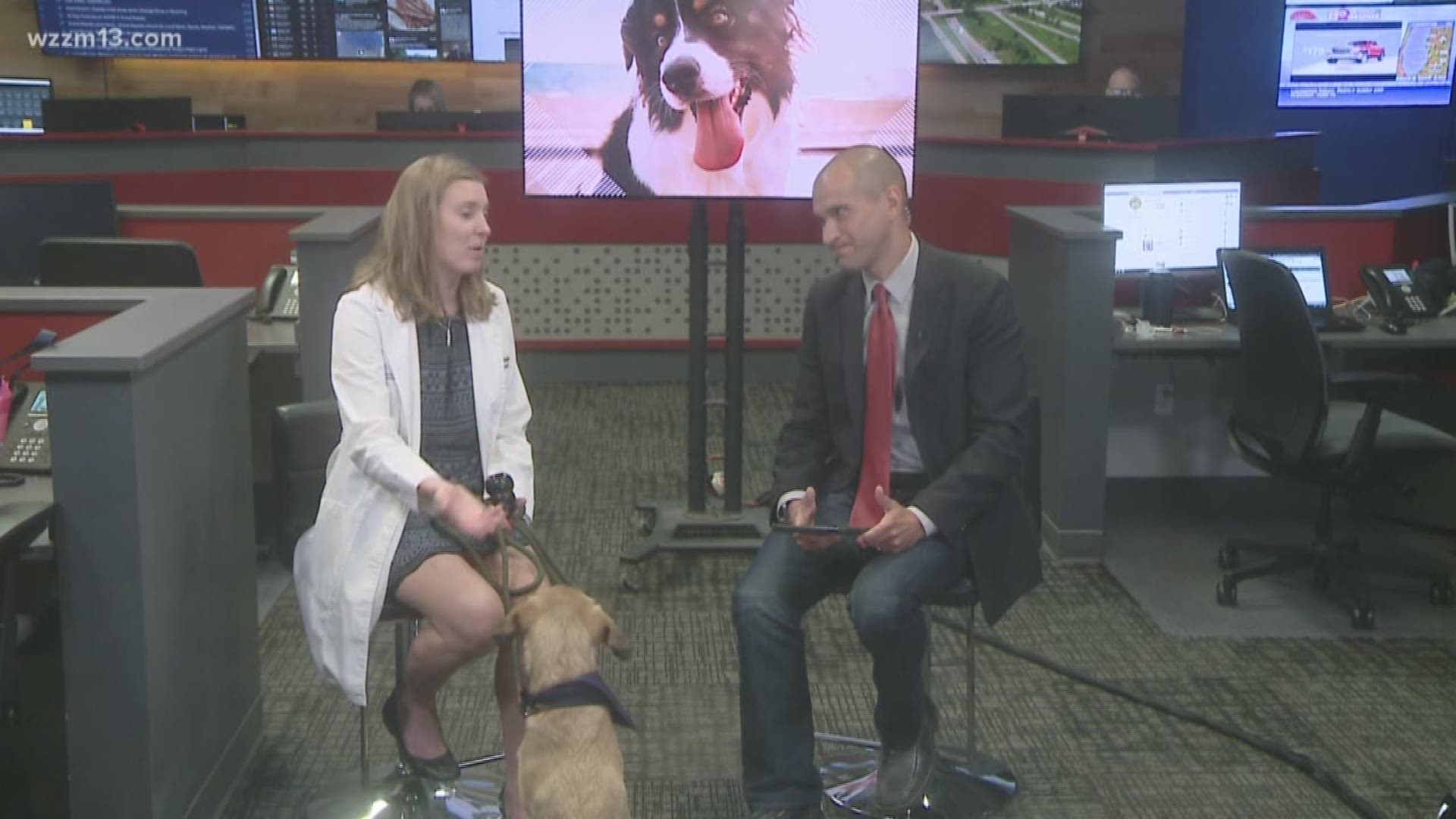GRAND RAPIDS, Mich - Dogs are our family members, best friends and furry companions – so it’s normal to want to take them with us on various adventures including walks, festival visits, vacations, parties and more. Your dog will likely encounter many other humans, dogs, sights and sounds while out and about with you, so it’s important to develop social skills to avoid anxiety and aggression based out of fear
1. Create a socialization checklist. When creating a plan for socializing your dog, it’s a good idea to start by making a list of the social scenarios he will likely encounter as part of your family. Examples include hiking paths in the park, outdoor festivals or a pet-friendly office environment. As you expose your pet to these various social situations, write down his reactions to track progress and determine his comfort levels. If he is overwhelmed at first, then decrease the intensity or duration of exposure to the environment or stimulus.
2. Begin socialization early. The ideal window for socializing a dog is between four and 14 weeks of age. Puppies in this age range are most receptive to novel things in their environment, so it’s important to expose them to human touch, other dogs and various objects, sounds and scents. If you adopted your furry friend as an older puppy or adult, don’t worry about having missed the peak socialization window. You can still teach social skills with patience and proper training.
3. Know your dog’s body language. How do you know if your dog is comfortable or anxious in a social scenario? The answer is in the body language. A comfortable dog has a calm or happy appearance and even a smile. You may notice a wagging tail and/or a happy bark, along with a relaxed body. A nervous dog, however, will appear tense and avoid eye contact. His hackles may be up, and he may shake, whimper or bark in an aggressive or anxious manner. Sometimes, a timid or fearful dog may roll over and expose his belly in submission – which is important not to confuse with asking for a belly rub.
4. Use tasty treats for encouragement. When teaching dogs new tricks, food is the best motivator. The same is definitely true with socialization training. Use a particularly yummy snack, such as chopped up ham or little cubes of cheese, to help encourage positive social behaviors. For example, if you pass a new person or dog on a walk and your dog remains calm or even wags his tail, reward with a treat and offer verbal praise. Make all associations with new and potentially scary things positive! You can help aid positive reinforcements with a dog training clicker.
5. Start small. Socialization should be taught in increasing intervals of duration and intensity, so start with baby steps. Begin by taking your dog for a walk in a quiet park or neighborhood, where you will encounter few dogs or people. Reward your dog with treats and praise if he remains calm. In the beginning, this may only occur if he sees a dog or person from afar. As his training progresses, you can expose him to more people, animals and sounds at a closer distance. Continue rewarding calm behavior as you add more stimuli to his environment.
6. Avoid too much exposure. Starting small is essential in dog socialization, because too much exposure can actually be harmful to your dog’s behavior health. It’s not best to start with dog park visits, group training classes or crowded festivals, as these settings can overwhelm your dog and encourage nervousness and anxiety.
7. Keep your dog’s personality in mind. Like humans, dogs have different personalities and comfort levels in social situations. While some dogs may enjoy playing outside with a big group of dogs, others
may prefer sitting home curled up with their family in a quiet room. It’s important not to feel obligated to fully socialize your dog for loud, bustling settings if your dog is naturally shy and less social than others.
8. Choose the right social settings. When socializing your dog, choose an environment that is safe and encouraging of positive social behavior. Try to pair your dog with other dogs of the same personality type and energy level. It’s also important to be mindful of the social training of other dogs and people in the setting, so scheduled play dates and structured doggy day care may be safer than a dog park visit. Also keep in mind that some dogs are more anxious on a leash because it makes them feel confined and unable to flee if needed. If your dog is anxious on a leash, chose a social setting in a fenced in yard or play room.
For more information about pet socialization, talk to your primary veterinarian or a veterinary behaviorist.
Our specialty and 24/7 Emergency hospital is located in Grand Rapids on "Medical Mile" just East of Fuller @ 1425 Michigan St. NE. We're here to help and proud to be a part of the West Michigan community!
►Make it easy to keep up to date with more stories like this. Download the 13 ON YOUR SIDE app now.
Have a news tip? Email news@wzzm13.com, visit our Facebook page or Twitter.

